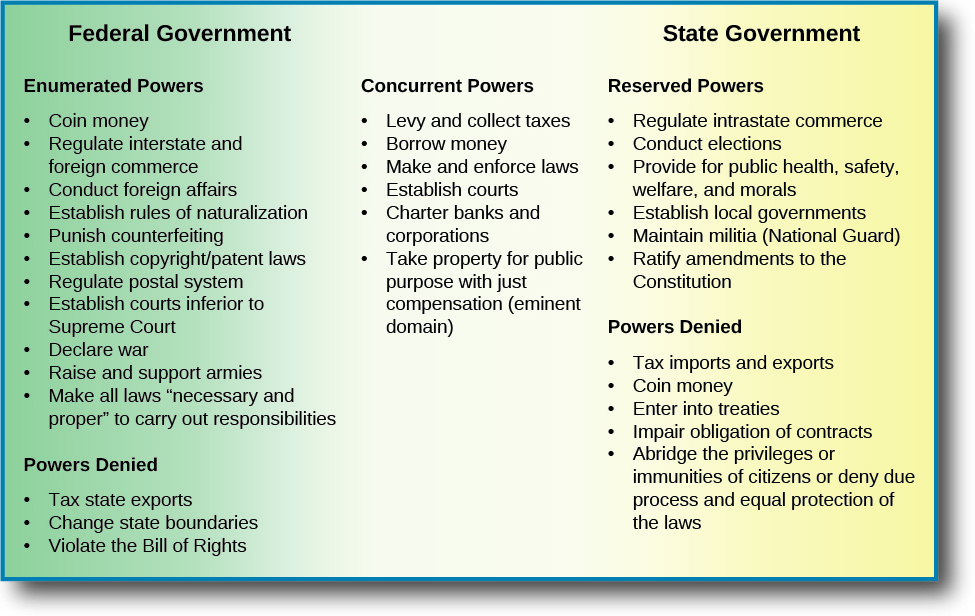| << Chapter < Page | Chapter >> Page > |
The last clause of Article I, Section 8, commonly referred to as the elastic clause or the necessary and proper cause , enables Congress “to make all Laws which shall be necessary and proper for carrying” out its constitutional responsibilities. While the enumerated powers define the policy areas in which the national government has authority, the elastic clause allows it to create the legal means to fulfill those responsibilities. However, the open-ended construction of this clause has enabled the national government to expand its authority beyond what is specified in the Constitution, a development also motivated by the expansive interpretation of the commerce clause, which empowers the federal government to regulate interstate economic transactions.
The powers of the state governments were never listed in the original Constitution. The consensus among the framers was that states would retain any powers not prohibited by the Constitution or delegated to the national government.
Some of the states’ reserved powers are no longer exclusively within state domain, however. For example, since the 1940s, the federal government has also engaged in administering health, safety, income security, education, and welfare to state residents. The boundary between intrastate and interstate commerce has become indefinable as a result of broad interpretation of the commerce clause. Shared and overlapping powers have become an integral part of contemporary U.S. federalism. These
concurrent powers range from taxing, borrowing, and making and enforcing laws to establishing court systems (
[link] ).

Article I, Sections 9 and 10, along with several constitutional amendments, lay out the restrictions on federal and state authority. The most important restriction Section 9 places on the national government prevents measures that cause the deprivation of personal liberty. Specifically, the government cannot suspend the writ of habeas corpus , which enables someone in custody to petition a judge to determine whether that person’s detention is legal; pass a bill of attainder , a legislative action declaring someone guilty without a trial; or enact an ex post facto law , which criminalizes an act retroactively. The Bill of Rights affirms and expands these constitutional restrictions, ensuring that the government cannot encroach on personal freedoms.

Notification Switch
Would you like to follow the 'American government' conversation and receive update notifications?